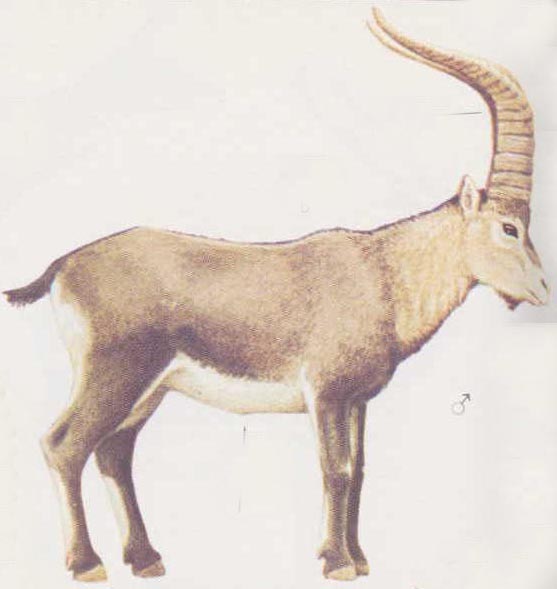Myotragus balearicus also known as the Balearic Islands cave goat.It is a species of the subfamily Caprinae which lived on the islands of Majorca and Minorca until its extinction around 5,000 years ago.This animal was previously considered as an 'odd goat,' but since the genetic analyses done at the University of Pompeu Fabra of Barcelona, it seems that Myotragus was more closely related to sheeps than to goats.
Myotragus balearicus was quite tinyl in size (standing about 0.5 metre high at the shoulder) and weighed between 50 to 70 kilograms.The legs were proportionately shorter than those of other related and less flexible bovines, which did not make Myotragus balearicus particularly fast. This animal was not a serious problem because on the islands there were no predators except for some birds of prey, from which they possibly hid in the vegetation. On the shoulders they had a pronounced hurst, while the back was bent in the hindquarters. The legs, like many from the order Artiodactyla, had four fingers of which only two were used to walk and the rest two were used for other purposes . The tail was quite long in comparison to the rest of the body.

The remaining fossil of Myotragus balearicus seem to indicate that this animal was a browser, like the present goats. It fed on almost all kinds of shrub vegetation and low branches of the trees of the Mediterranean climate, although it had a special predilection to native Balearic shrubs. The remaining fossil record of Majorca and Minorca, as well as the absence of grazing animals, seem to prove that the initial Balearic Islands were covered by forests before human colonisation and that herbaceous grassland of appreciable size did not exist. In this place, Myotragus used to move about in solitude or in small group.
From reproductive point of view not much is known about the habits of this species. In 1999 the skeleton of a newly born individual species of this animal was found near Manacor in the northeast of Majorca. It was found that a Myotragus newborn was quite large in comparison to the size of the mother, and probably it could walk and follow its originator around soon after being born. It seems that it did not take a long time for maturation perhaps only a year or two.
One of the most unique characteristics of Myotragus balearicus are a consequence of a prolonged process of evolution on the islands as for example island dwarfing.
The dominant theory regarding the extinction of this species is the one that postulates an extinction by human causes. The first human colonization of the Balearic Islands towards 5000 BC or even before was dated by the traditional methods. Human hunting, the failure of domestication, the introduction of domestic animals like goats such as cows, pigs and sheep (and consequently, the destruction of the forests to create places for them to pasture) and dogs were the common causes for the extinction of this animal.
Photo credit Google